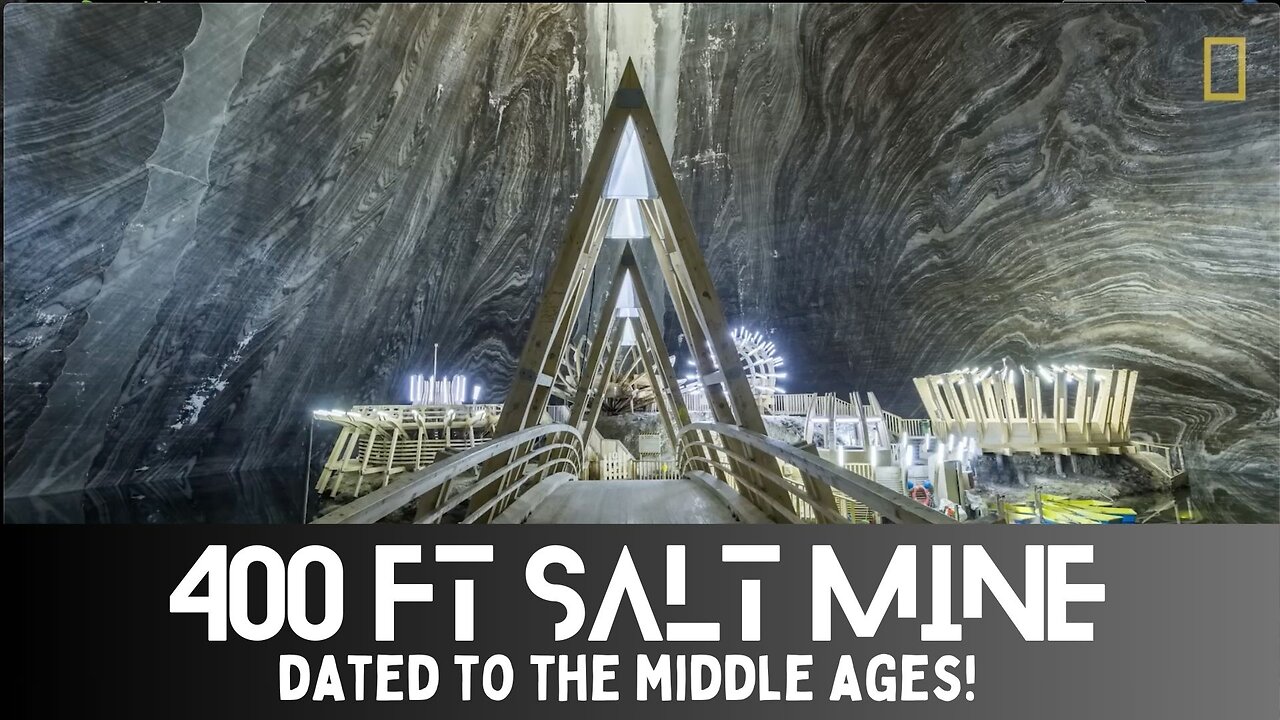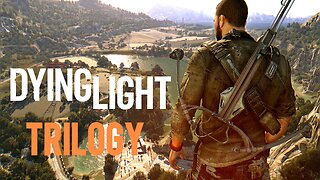Premium Only Content

Huh? 400-ft. Deep Salt Mine with Carved Balconies Dug During the Middle Ages!
The Transylvanian Salt Mine, also known as Salina Turda, is a fascinating and unique tourist attraction located in Turda, Transylvania, Romania. This salt mine has a rich history, dating back to antiquity when salt was first extracted from the area. This mine was first mentioned in 1075 during the Middle Ages. The mine is 400 feet deep in parts and contains balconies carved in salt. Today, the mine is an amusement park and Halotherapy center due to the therapeutic properties of salt.
Out of curiosity, I asked Microsoft CoPilot how long it would take to dig hole 400 feet deep and 3 feet wide with a shovel and a pick axe. Here's the reply that I got_
"Digging 400 feet with shovels and pick axes is quite a challenging task and the time it takes can vary significantly based on several factors such as soil type, the number of people working, and their physical condition."
RUDOLPH HALL: This hall is 80 meters long (262 ft.), 50 meters wide (164 ft.), and 40 meters high (131 ft.).
IOSOF MINE: Known as the "Echoes Room" due to its powerful echo, this conical chamber is 112 meters (367 ft.) deep and 67 meters (219 ft.) wide at the base.
CRIVAC ROOM: This room houses a winch called "crivac" or "gepel," which dates back to 1881 and was used to lift salt rocks to the surface.
TEREZIA MINE: A conical mine with impressive underground halls, including a 90-meter (295 ft.) high and 87-meter (285 ft.) diameter chamber.
UNDERGROUND AMUSEMENT PARK: The mine has been transformed into an underground amusement park, offering a unique and memorable experience for visitors.
HALOTHERAPY CENTER: Since 1992, Salina Turda has also served as a halotherapy center, providing therapeutic benefits from the salt-rich environment.
TEMPERATURE: The temperature inside the mine is a chilly 10°C (50 degrees Fahrenheit) to 12°C (53 degrees Fahrenheit0, so it's advisable to wear layers.
Salina Turda
https://en.wikipedia.org/wiki/Salina_Turda
SOURCE
National Geographic
-
 31:01
31:01
The Aquarius Bus
10 months agoExquisite Old World Philadelphia. Founded 1682. Why Did They Move The Capital to DC?
2.04K8 -
 1:14:07
1:14:07
Glenn Greenwald
6 hours agoGlenn Takes Your Questions: Billionaires, Bari Weiss and Journalism | SYSTEM UPDATE #509
45.9K11 -
 LIVE
LIVE
SavageJayGatsby
21 hours agoLet's Play: Sea of Thieves | Friend Friday
171 watching -
 LIVE
LIVE
GritsGG
1 hour agoTop 250 Ranked Grind! Dubulars!🫡
92 watching -
 19:51
19:51
Robbi On The Record
22 hours agoElectronic Tattoos Measuring Thoughts? From iPhone to iSkin
11.6K14 -
 8:12
8:12
Hollywood Exposed
1 day agoJoy Behar Tried To Shame Tulsi Gabbard And Instantly FAILED
17 -
 17:03
17:03
IsaacButterfield
15 hours ago $0.12 earnedBritish Man ARRESTED for Saying ‘I Love Bacon’ to a Muslim!!
8833 -
 LIVE
LIVE
StevieTLIVE
35 minutes agoFriday Night HYPE Warzone Games with Stevie
44 watching -
 LIVE
LIVE
The Sufari Hub
1 hour ago🔴SUFARI & JAMES TAKE ON THE UNDEAD - DYING LIGHT THEN THE FOLLOWING
12 watching -
 48:10
48:10
The Mel K Show
3 hours agoMel K & George Papadopoulos | Deep State Targets Rising: The Geopolitical Reality of Spy Gate | 9-5-25
4.27K